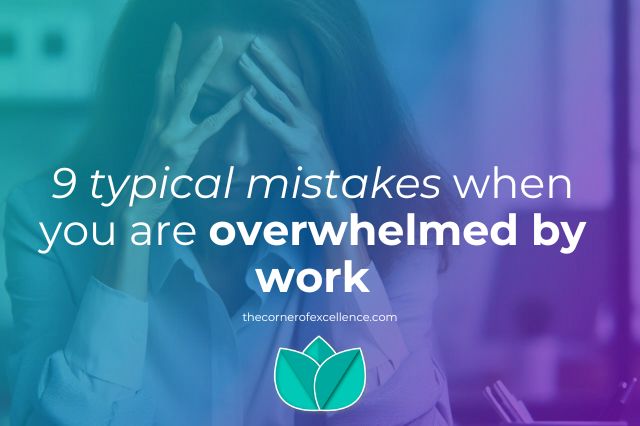Non-acceptance of ourselves, our situation and our environment is a source of stress. Practicing acceptance puts us in a posture and mindset that allows us to be more comfortable with our lives and improve what we want.
Let us see what acceptance means and what it does not. We will talk about how a mindset of acceptance and resistance affects us. Finally we will look at how you can train acceptance.
What does acceptance mean
The word acceptance comes from the Latin acceptatio which means action and effect of approving and receiving. We can think of accepting a job offer or a budget for example.
In psychology, however, acceptance refers to the fact of validating how we, others or certain situations are without the need to agree. It refers to the tolerance of different people, behaviours and experiences from an active position.
What is not acceptance
Acceptance does not mean resigning oneself, adopting a position of victimhood, resistance and conformity. Resignation and resistance are the cause of stress and frustration.
Psychologist Albert Ellis said that when we do not accept ourselves unconditionally, feelings of shame, humiliation, inadequacy, anxiety, guilt, depression, self-criticism, overcompliance, unworthiness as well as a lack of confidence arise.
When our acceptance is conditional, we only accept when things go well or we are performing well. We need the approval of others.
Acceptance is not conformity
Conformity means resigning yourself to the situation, in a mentality of inaction, stagnation and victimhood. Even if they have a life they do not like, the person complains but without taking action.
Thoughts of helplessness, of not being enough or not being able to change the situation are usual indicators. This mindset causes more and more frustration. Still, the person installed in conformity resigns and surrenders to negative emotions, obstacles and situations that are not to their liking. They are afraid to face what makes them feel vulnerable, seems bad, painful, or embarrassing.
Acceptance does not mean being comfortable or agreeing
Practicing acceptance does not mean that you like something or that you want things to be that way. Nor does it mean that you support or agree with it. It means becoming aware that the situation is a certain way and taking it as a starting point. Because resisting that things are the way they are right now only causes us unnecessary suffering and stress.
Acceptance does not mean resigning to the fact that it will always be this way
Accepting a situation now does not mean settling for it. It does not mean that it cannot change for the better in the future or that we cannot do anything to improve it.
Just because someone behaves in a way that we dislike today does not mean that they will always do so or make them a bad person. Feeling bad, sad, or angry now does not define you forever.
Accepting that you do not have the knowledge or resources to face a problem now does not mean that you cannot acquire them. Even the fact that you do not like something about your body does not mean that you cannot accept it and then work on improving that part. And these are just a few examples.

Acceptance does not mean not being able to improve things
Resigning yourself and passively and apathetically conforming or giving up are not synonymous with acceptance. Sometimes it can seem easier not to face our problems, worries, or fears. But they will only grow with time. Life evolves and we should too.
How to practice acceptance
Acceptance means acknowledging that life, what happens to us as well as how others are and how they behave may not always please us. It means accepting that things are like that and learning to live with it. But it means doing so in a resilient and action-oriented way.
Give yourself permission and accept how you are and behave, what you feel and what you experience. Then give others the same opportunity. That is, accept how they are, how they feel and how they behave due to their experiences.
Learn to differentiate acceptance from conformity
Remember that we mentioned that conformity is a passive and victimising attitude. Conforming is continuing to resist and on top of it giving up. Therefore, it is often accompanied by feelings of frustration, fatigue, hopelessness or sadness.
On the contrary, acceptance creates a sense of relief, calm, and peace. You will notice that your body relaxes and your breathing calms down. Your mantra could be: “It is as it is. I may not like it but I can accept it. “
Accept what you can not change
First this requires differentiating between what we can change and what we cannot. There will be things beyond our control. For example, we cannot control how others are or how they behave. But we can decide how to feel about it. We can get stressed and frustrated. Or we can accept that it is the way it is and learn to live with it.
This acceptance is key to our mental and emotional well-being. Because it means to stop resisting and fighting against what has no solution or is not under our control.
Acceptance is looking for new paths
Once we have determined and accepted what we cannot change, we can set our sights on other opportunities. We can look for new ways to overcome or circumvent the obstacle that we cannot remove. As they say, when one door closes, others open.
Acceptance requires practice
Acceptance is an active process and requires some effort. But no master falls from the sky. Similarly, acceptance can be trained. As you practice, accept that you can relapse into resistance from time to time. The learning curve of any new knowledge or skill is usually not linear but logarithmic. But over time you will gain practice and it will become easier.
Try different things
Train your acceptance skills with different things, emotions, ideas, people and situations. Start with something that you like. Explore the feeling of accepting it. Then choose something that you neither like nor dislike, that is to say something neutral. Again immerse yourself in the feeling of acceptance.
Then choose something that you find slightly unpleasant; for example a smell, a noise, the feeling of cold or heat. Now practice acceptance. You probably feel some resistance. But try to get over it and accept the unpleasant.
Little by little you can practice with things that annoy you more. This way you will train your acceptance muscle and also your understanding and compassion.

Practice with yourself
Being able to accept others requires practicing being less critical, starting with ourselves. Knowing yourself better and accepting yourself unconditionally will also make it easier for you to accept others with their strengths and weaknesses.
That is why I suggest that you do the previous exercise with yourself. For example, start with parts of your body. First what you like about yourself, then something neutral and finally something you do not like.
Then you can do the same acceptance practice for your personality traits, abilities, emotions and experiences. Start with everything that you love about yourself and take pride in. Then dare to delve into regrets, shame and fear. Start small. Little by little you will learn to face bigger worries. But above all remember to be compassionate to yourself.
The importance of mindset
Finally, a note on the mindset that will help you on your journey towards acceptance. As Carol S. Dweck explains in her book “Mindset” we can differentiate between a fixed and a growth mindset. The first is characterised by thinking that things are as they are and we cannot change them. Our intelligence and our character, for example, are defined. This mindset leads to a need to constantly prove your worth and run away from what might challenge you.
On the other hand, the growth mindset means believing that we can develop our personality, intelligence and abilities. People with this mindset enjoy challenges and learning.
If you want to train your capacity for acceptance, I suggest that you settle into a growth mindset. Enjoy experimenting, exploring and learning. Do not be intimidated by challenges. And above all, believe in your ability to develop and grow.
Do you practice acceptance?
What is easier for you to accept? Can it serve as a starting point for you to practice accepting other things that you resist? What riles you up and is difficult for you to accept?

Sharing is caring!





